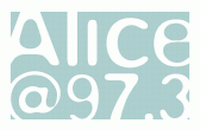
WPGC-FM is a commercial radio station licensed to Morningside, Maryland, and serving the Washington metropolitan area. It is owned by Audacy, Inc., and airs an urban contemporary format.
Contemporary hit radio is a radio format that is common in many countries that focuses on playing current and recurrent popular music as determined by the Top 40 music charts. There are several subcategories, dominantly focusing on rock, pop, or urban music. Used alone, CHR most often refers to the CHR-pop format. The term contemporary hit radio was coined in the early 1980s by Radio & Records magazine to designate Top 40 stations which continued to play hits from all musical genres as pop music splintered into Adult contemporary, Urban contemporary, Contemporary Christian and other formats.

KPWR – branded as Power 106 – is a commercial radio station in Los Angeles, California, broadcasting to the Greater Los Angeles area. KPWR is owned and operated by Alex Meruelo's Meruelo Group, through licensee KPWR Radio Holdings LLC, and airs a Rhythmic Hot AC format. KPWR's studios are based in the Los Angeles suburb of Burbank, and the transmitter is on Mount Wilson, shared with KCAL-TV and KRTH. Meruelo acquired KPWR from Emmis Communications for $82.75 million in May 2017, officially bringing the station under common ownership with KDAY, KDEY-FM, KWHY-TV, and KBEH on August 1, 2017.

KSAN is a commercial FM radio station licensed to San Mateo, California, and serving the San Francisco Bay Area. It is owned and operated by Cumulus Media and it airs a mainstream rock radio format. It also serves as the FM flagship station for the San Francisco 49ers Radio Network. KSAN's studios and offices are located on Battery Street in San Francisco's SoMa district.

KLLC is a commercial radio station located in San Francisco, California, broadcasting to the San Francisco Bay Area. The station is owned by Audacy, Inc. Its transmitter is off Wolfback Ridge Road on Mount Beacon in the Marin Headlands near Sausalito, California. The studios and offices are co-located with formerly co-owned KPIX-TV on Battery Street in downtown San Francisco.
Rhythmic contemporary, also known as Rhythmic Top 40, Rhythmic CHR or rhythmic crossover, is a primarily American music-radio format that includes a mix of EDM, upbeat rhythmic pop, hip hop and upbeat R&B hits. Rhythmic contemporary never uses hard rock or country in its airplay, but it may occasionally use a reggae, Latin, reggaeton, or an urban contemporary gospel hit. Essentially, the format is a cross between mainstream radio and urban contemporary radio formats.
KSOL is a Spanish language radio station in San Francisco, California. KSQL simulcasts the station in Santa Cruz. KSOL and KSQL program a format consisting of regional Mexican music and talk shows. Both stations are owned by TelevisaUnivision USA. Its studios are located at 1940 Zanker Road in San Jose, and the KSOL transmitter is on Mount Sutro.

KOSF is a commercial radio station licensed to San Francisco, California. It airs a classic hits format and is owned by iHeartMedia, Inc. The studios are on Townsend Street in San Francisco's SoMa district. In middays, it carries the syndicated Martha Quinn Show from co-owned Premiere Networks.

KISQ is a commercial radio station licensed to San Francisco. It broadcasts a soft adult contemporary radio format, known as "The Breeze," and is owned by iHeartMedia, Inc. The radio studios and offices are in the SoMa district of San Francisco.

KVVZ is a commercial FM radio station licensed to San Rafael, California, and serving the San Francisco area. The station is owned by TelevisaUnivision, through licensee Univision Radio Bay Area, Inc. It simulcasts a Spanish Contemporary radio format with sister station 105.7 KVVF Santa Clara. The studios are in San Jose.

KVVF is a commercial radio station licensed to Santa Clara, California, and is simulcast on 100.7 KVVZ San Rafael. They are owned by Univision Communications, with studios at 1940 Zanker Road in San Jose. They serve the San Francisco Bay Area with a Spanish CHR radio format, using the slogan "Reggaeton y más." KVVF and KVVZ are the San Jose affiliates for the Uforia Audio Network.

Bennett Gordon Schwarzmann, better known by his on-air name, Alex Bennett, is an American talk radio host, known for his mix of left-wing politics and humor. In the 1970s he made his mark in New York City where he was dubbed "The Youth Guru" by the press for his work on WMCA and WPLJ.

California Music Channel (CMC) is an American music video broadcast television network based in the San Francisco Bay Area. It is one of the longest running local music video television stations in the world. CMC has been broadcasting music videos over the air in the Bay Area since 1982. CMC has grown from an hour-long program to two 24/7 stations with digital simulcast capabilities. The live broadcasts feature on-camera disc jockeys, audience participation, and contemporary music videos. It is owned by CMC Broadcasting Company, Inc. CMC is carried as a Digital Broadcast Network nationally on LocalBTV, and locally on nine Northern California television stations including company owned and operated KTVJ-LD Boise, Idaho. CMC is also carried as a live linear channel on various Free ad-supported streaming television platforms and the California Music Channel App available for download to connected TVs and mobile devices.

KHYL is a commercial radio station, licensed to Auburn, California, and serving the Sacramento metropolitan area. It broadcasts a classic hip hop radio format and is owned by iHeartMedia, Inc. The studios and offices are on River Park Drive, off the Capital City Freeway in North Sacramento near the Arden Fair Mall.
KMVQ-FM is a commercial radio station licensed to San Francisco, California. It is owned by Salt Lake City–based Bonneville International and it broadcasts a Top 40/CHR format branded as 99.7 Now. The studios are at 2001 Junipero Serra Boulevard in Daly City. KMVQ is one of two Top 40/CHR stations in the San Francisco, the other being iHeartMedia's KYLD.

KFRC was a radio station in San Francisco, California, United States, which made its first broadcast on Wednesday, September 24, 1924, from studios in the Hotel Whitcomb, at 1231 Market Street. KFRC originally broadcast with 50 watts on the 270 meter wavelength, then moved to 660 kHz in April 1927. As part of nationwide frequency reallocations on November 11, 1928, KFRC was moved to 610 kHz, where the call letters remained until 2005.

KYLD is a commercial radio station in San Francisco, California, serving the San Francisco Bay Area and owned by San Antonio–based iHeartMedia. The station airs a Top 40 (CHR) format on its analog primary signal. The station has studios located in the SoMa district of San Francisco, and the transmitter is located atop the San Bruno Mountains.

KRBQ is a classic hip hop radio station in San Francisco, California and owned by Audacy, Inc. The station transmits its signal from Mount Beacon atop the Marin Headlands above Sausalito, California, while studios are located in the KPIX-TV building in the North Beach district of San Francisco.
Keith Phillip Naftaly is an American music industry executive. He is the president of A&R at RCA Records. Naftaly previously held senior A&R positions at record companies including Arista, DreamWorks Records, and Sony Music. He has worked with artists including Pentatonix, Kesha, Whitney Houston, Kelly Clarkson, Luther Vandross, Sia and Christina Aguilera.














